Table of Contents
- Understanding Cat Gingivitis: Causes and Symptoms
- Importance of Feline Dental Health: Risks of Untreated Gingivitis
- Diagnosis of Cat Gingivitis: How Veterinarians Determine the Severity
- Non-Surgical Cat Gingivitis Treatment Options: Antibiotics and At-Home Care
- Surgical Cat Gingivitis Treatment Options: Gingivectomy and Extraction
- Post-Treatment Care: How to Prevent Gingivitis in Cats
- The Role of Diet in Feline Dental Health: Foods to Support Healthy Teeth and Gums
- Dental Hygiene Products for Cats: Toothbrushes, Toothpaste, and More
- Regular Dental Check-Ups: Importance and Frequency
Understanding Cat Gingivitis: Causes and Symptoms
Gingivitis is a common dental problem in cats, caused by the inflammation of the gums due to bacterial infection. It can lead to periodontitis, a more severe condition that can cause tooth loss and damage to the surrounding bone and tissue if left untreated. Understanding the causes and symptoms of cat gingivitis can help pet owners recognize the problem early and seek proper Cat gingivitis treatment.
Causes of Cat Gingivitis
The most common cause of cat gingivitis is the buildup of plaque and tartar on the teeth. When plaque is not removed through regular brushing, it hardens into tartar, which can irritate the gums and lead to inflammation. Other contributing factors to cat gingivitis include poor nutrition, stress, and underlying health conditions such as diabetes.
Symptoms of Cat Gingivitis
The most common symptom of cat gingivitis is red, swollen, and bleeding gums. Cats may also experience bad breath, loss of appetite, and difficulty eating due to pain and discomfort. As the condition progresses, the gums may recede, exposing the roots of the teeth and leading to further dental problems. If you notice any of these symptoms in your cat, it’s important to seek cat gingivitis treatment as soon as possible.
The Importance of Early Cat Gingivitis Treatment
Early detection and treatment of cat gingivitis is crucial for preventing the condition from progressing to periodontitis. Non-surgical cat gingivitis treatment options include antibiotics to reduce the bacterial infection and at-home care such as brushing the teeth and providing dental chews. In more severe cases, surgical options such as gingivectomy or extraction may be necessary. Prompt treatment can also improve your cat’s overall health, as untreated gingivitis can lead to other health problems such as heart disease.
In summary, cat gingivitis is a common dental problem in cats caused by bacterial infection and can lead to more severe conditions if left untreated. Understanding the causes and symptoms of cat gingivitis can help pet owners recognize the problem early and seek proper cat gingivitis treatment, which can include non-surgical and surgical options. Early treatment is crucial for preventing the condition from progressing and improving your cat’s overall health.
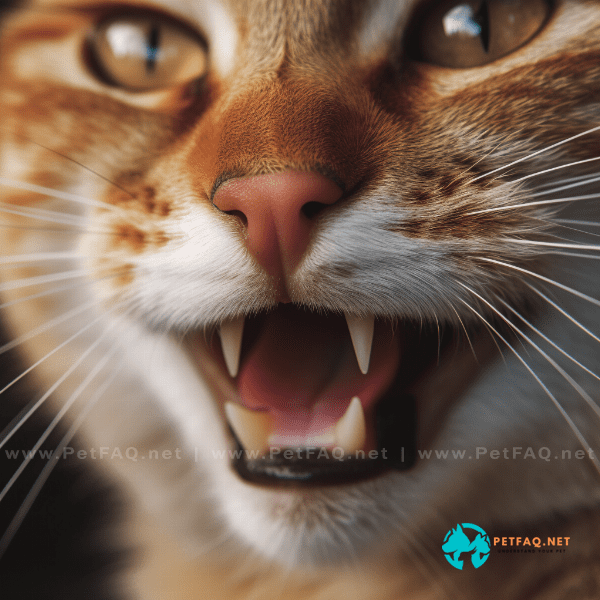
Importance of Feline Dental Health: Risks of Untreated Gingivitis
Cat gingivitis may seem like a minor problem, but if left untreated, it can lead to serious health risks for your cat. Understanding the importance of feline dental health and the risks of untreated gingivitis can help pet owners prioritize their cat’s dental care and seek cat gingivitis treatment when necessary.
Risks of Untreated Cat Gingivitis
One of the most significant risks of untreated cat gingivitis is the progression to periodontitis, which can cause tooth loss and damage to the surrounding bone and tissue. Periodontitis can also lead to painful abscesses and oral infections, which can affect your cat’s overall health. In addition, untreated gingivitis can contribute to other health problems such as heart disease, as the bacteria from the infected gums can spread to other parts of the body through the bloodstream.
Importance of Feline Dental Health
Maintaining good feline dental health is essential for preventing and treating cat gingivitis. Regular brushing and dental check-ups can help prevent the buildup of plaque and tartar on the teeth, reducing the risk of gum inflammation and infection. Providing dental chews and a balanced diet can also support your cat’s dental health.
Seeking Cat Gingivitis Treatment
If your cat is showing symptoms of gingivitis, it’s important to seek cat gingivitis treatment as soon as possible. Non-surgical treatment options include antibiotics to reduce the bacterial infection and at-home care such as brushing the teeth and providing dental chews. In more severe cases, surgical options such as gingivectomy or extraction may be necessary.
In conclusion, understanding the importance of feline dental health and the risks of untreated cat gingivitis can help pet owners prioritize their cat’s dental care and seek cat gingivitis treatment when necessary. Untreated gingivitis can lead to serious health risks for your cat, including periodontitis and other health problems such as heart disease. Maintaining good feline dental health through regular brushing and dental check-ups can help prevent and treat cat gingivitis.
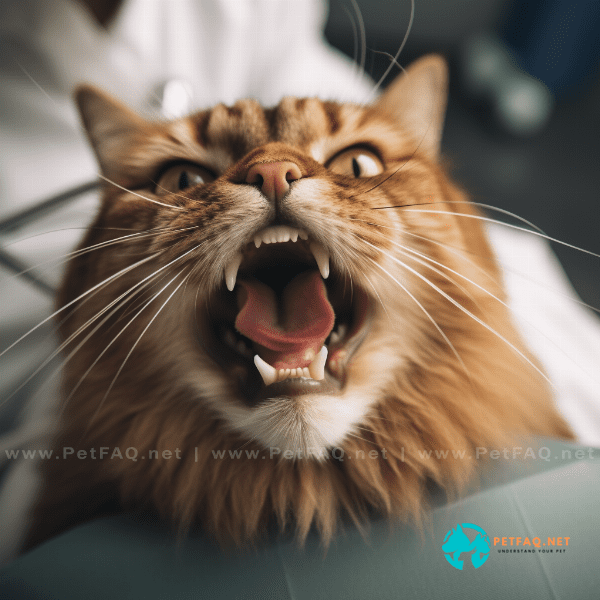
Diagnosis of Cat Gingivitis: How Veterinarians Determine the Severity
If you suspect that your cat may have gingivitis, it’s important to take them to a veterinarian for a proper diagnosis. A veterinarian can determine the severity of the condition and recommend appropriate cat gingivitis treatment options. Here’s how veterinarians diagnose cat gingivitis:
Physical Examination
The first step in diagnosing cat gingivitis is a physical examination of the mouth. The veterinarian will look for signs of inflammation, bleeding, and plaque buildup on the teeth and gums. They may also take X-rays to check for underlying dental problems such as tooth decay or abscesses.
Dental Probing
Dental probing is a technique used to measure the depth of the spaces between the teeth and gums. The veterinarian will use a probe to measure the depth of these spaces, known as pockets. The depth of the pockets can help determine the severity of the gingivitis and the level of cat gingivitis treatment needed.
Blood Test
A blood test may also be performed to check for underlying health conditions that may contribute to gingivitis, such as diabetes or kidney disease. The results of the blood test can help the veterinarian determine the appropriate cat gingivitis treatment options.
Anesthesia
In some cases, anesthesia may be necessary to properly diagnose and treat cat gingivitis. Anesthesia allows the veterinarian to thoroughly examine the mouth and teeth, take X-rays, and perform any necessary dental procedures. Before administering anesthesia, the veterinarian will perform a physical exam and blood tests to ensure that your cat is healthy enough for the procedure.
In conclusion, diagnosing cat gingivitis involves a physical examination, dental probing, and possibly a blood test and anesthesia. These diagnostic tools help veterinarians determine the severity of the gingivitis and recommend appropriate cat gingivitis treatment options. If you suspect that your cat may have gingivitis, it’s important to take them to a veterinarian for a proper diagnosis.
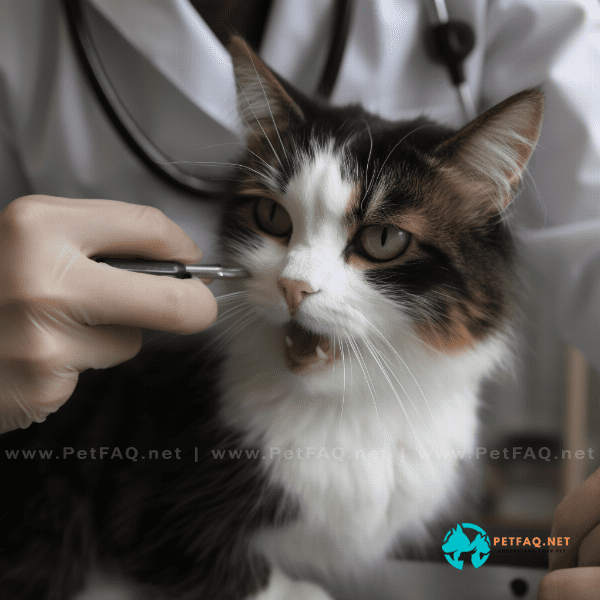
Non-Surgical Cat Gingivitis Treatment Options: Antibiotics and At-Home Care
If your cat has been diagnosed with gingivitis, there are non-surgical cat gingivitis treatment options available that can help reduce inflammation and bacterial infection. Here are some of the most common non-surgical cat gingivitis treatment options:
Antibiotics
Antibiotics are often prescribed to treat cat gingivitis caused by bacterial infection. These medications can help reduce inflammation and prevent the infection from spreading. Antibiotics may be administered orally or through injection, depending on the severity of the gingivitis.
Professional Dental Cleaning
If your cat’s gingivitis is more severe, a professional dental cleaning may be necessary. This procedure is typically performed under anesthesia and involves the removal of plaque and tartar from the teeth and gums. Your veterinarian may also perform additional dental procedures such as tooth extraction or root planing.
In conclusion, non-surgical cat gingivitis treatment options include antibiotics, at-home care, and professional dental cleaning. Antibiotics can help reduce inflammation and prevent the infection from spreading, while at-home care such as regular brushing and providing dental chews can promote healthy teeth and gums. If your cat’s gingivitis is more severe, a professional dental cleaning may be necessary. It’s important to work with your veterinarian to determine the best cat gingivitis treatment options for your cat’s individual needs.

Surgical Cat Gingivitis Treatment Options: Gingivectomy and Extraction
In some cases, non-surgical cat gingivitis treatment options may not be enough to treat the condition. In these instances, surgical cat gingivitis treatment options such as gingivectomy and extraction may be necessary. Here’s what you need to know about these procedures:
Gingivectomy
A gingivectomy is a surgical procedure that involves the removal of diseased gum tissue. This procedure is typically performed under anesthesia and involves the use of a scalpel or laser to remove the infected tissue. After the procedure, the remaining healthy gum tissue will be sutured back in place.
Extraction
Tooth extraction is a common surgical cat gingivitis treatment option for teeth that are severely damaged or infected. This procedure involves the complete removal of the affected tooth, and is typically performed under anesthesia. After the procedure, your cat will require pain management and follow-up care to ensure proper healing.
Aftercare
After undergoing a surgical cat gingivitis treatment, it’s important to follow your veterinarian’s aftercare instructions to ensure proper healing. Your cat may require pain management medication and a soft food diet for a period of time after the procedure. It’s also important to maintain good dental hygiene through regular brushing and at-home care to prevent the recurrence of gingivitis.
In conclusion, surgical cat gingivitis treatment options such as gingivectomy and extraction may be necessary in cases where non-surgical options are not enough to treat the condition. These procedures are typically performed under anesthesia and require proper aftercare to ensure proper healing. It’s important to work closely with your veterinarian to determine the best cat gingivitis treatment options for your cat’s individual needs.
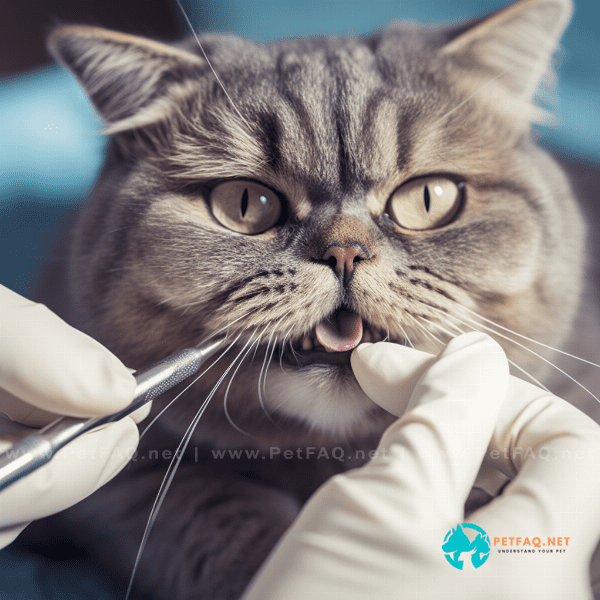
Post-Treatment Care: How to Prevent Gingivitis in Cats
After undergoing cat gingivitis treatment, it’s important to take steps to prevent the condition from recurring. Here are some tips for post-treatment care and preventing gingivitis in cats:
Regular Brushing
Regular brushing is essential for preventing the buildup of plaque and tartar on your cat’s teeth, which can contribute to gingivitis. Use a toothbrush and toothpaste specifically designed for cats, and aim to brush your cat’s teeth at least once a day. If your cat is resistant to brushing, start slowly and gradually increase the frequency over time.
Professional Dental Check-Ups
Regular dental check-ups with your veterinarian are also essential for preventing gingivitis in cats. Your veterinarian can monitor your cat’s dental health and recommend appropriate cat gingivitis treatment options if necessary. They can also perform professional dental cleanings to remove plaque and tartar buildup and prevent the recurrence of gingivitis.
In conclusion, post-treatment care is crucial for preventing the recurrence of gingivitis in cats. Regular brushing, at-home care, and professional dental check-ups can all help maintain good feline dental health and prevent the buildup of plaque and tartar on the teeth. If you notice any symptoms of gingivitis in your cat, it’s important to seek cat gingivitis treatment as soon as possible to prevent the condition from progressing.

The Role of Diet in Feline Dental Health: Foods to Support Healthy Teeth and Gums
A balanced diet is essential for maintaining good feline dental health and preventing the development of gingivitis. Here’s what you need to know about the role of diet in feline dental health and the best foods to support healthy teeth and gums:
Importance of Diet for Feline Dental Health
Diet plays a crucial role in maintaining healthy teeth and gums in cats. A balanced diet that is high in protein and low in carbohydrates can help prevent the buildup of plaque and tartar on the teeth, reducing the risk of gingivitis. In addition, certain nutrients such as vitamin C and antioxidants can help support healthy gum tissue.
Foods to Support Healthy Teeth and Gums
There are several types of foods that can support feline dental health and help prevent gingivitis. Here are some examples:
- Wet food: Wet food can help keep your cat’s mouth moist and reduce the buildup of plaque and tartar on the teeth.
- Dental diets: Some cat foods are specifically formulated to promote dental health, with added ingredients such as enzymes and abrasives to help remove plaque.
- Raw food: Raw food diets can help promote healthy teeth and gums by providing a natural source of enzymes and reducing the buildup of plaque and tartar.
Foods to Avoid
In addition to choosing foods that support feline dental health, it’s also important to avoid certain foods that can contribute to the development of gingivitis. Here are some foods to avoid:
- Carbohydrates: High-carbohydrate diets can contribute to the buildup of plaque and tartar on the teeth, increasing the risk of gingivitis.
- Sugary foods: Sugary foods can also contribute to the development of plaque and tartar, which can lead to gingivitis.
- Hard, crunchy foods: Hard, crunchy foods such as bones and treats can cause damage to the teeth and gums, increasing the risk of gingivitis.
In conclusion, a balanced diet that is high in protein and low in carbohydrates is essential for maintaining good feline dental health and preventing the development of gingivitis. Wet food, dental diets, and raw food can all support healthy teeth and gums, while avoiding high-carbohydrate and sugary foods can help reduce the risk of gingivitis. If you’re unsure about the best diet for your cat’s dental health, consult with your veterinarian for guidance.
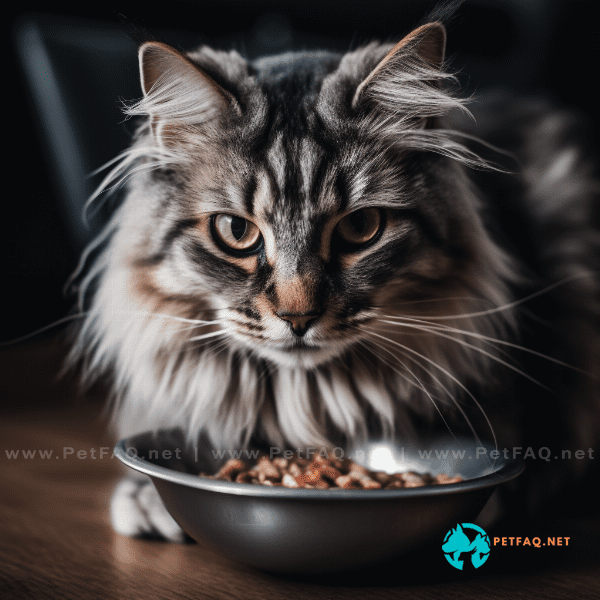
Dental Hygiene Products for Cats: Toothbrushes, Toothpaste, and More
Regular brushing is essential for maintaining good feline dental health and preventing the development of gingivitis. Here’s what you need to know about dental hygiene products for cats, including toothbrushes, toothpaste, and more:
Toothbrushes
There are several types of toothbrushes available for cats, including traditional bristle brushes and finger brushes. Bristle brushes are available in a variety of sizes and shapes to accommodate different mouth sizes, while finger brushes can be easier to use for cats who are resistant to brushing. When choosing a toothbrush for your cat, look for a soft-bristled brush that is specifically designed for feline dental care.
Toothpaste
Toothpaste specifically designed for cats is also available and is essential for removing plaque and preventing the development of gingivitis. Never use human toothpaste on your cat, as it can be harmful to their health. Cat toothpaste comes in a variety of flavors, so you can choose one that your cat enjoys.
Dental Wipes
Dental wipes can be used as an alternative to brushing for cats who are resistant to toothbrushing. These wipes are pre-moistened with an antibacterial solution that helps remove plaque and tartar from the teeth and gums. They can be especially useful for cats with sensitive teeth or gums.
Water Additives
Water additives are another option for promoting good feline dental health. These additives are added to your cat’s drinking water and work to remove plaque and prevent the development of gingivitis. They come in a variety of flavors and are easy to use.
In conclusion, dental hygiene products such as toothbrushes, toothpaste, dental wipes, and water additives are essential for maintaining good feline dental health and preventing the development of gingivitis. When choosing dental hygiene products for your cat, look for those specifically designed for feline dental care and consult with your veterinarian for guidance. Regular brushing and at-home care, in combination with professional dental check-ups, can help ensure good feline dental health for years to come.

Regular Dental Check-Ups: Importance and Frequency
Regular dental check-ups with your veterinarian are essential for maintaining good feline dental health and preventing the development of gingivitis. Here’s what you need to know about the importance and frequency of regular dental check-ups:
Importance of Regular Dental Check-Ups
Regular dental check-ups with your veterinarian are important for several reasons. Your veterinarian can monitor your cat’s dental health and identify any issues before they become more serious. They can also perform professional dental cleanings to remove plaque and tartar buildup and prevent the development of gingivitis. Additionally, regular dental check-ups can help prevent the need for more invasive cat gingivitis treatment options such as extractions and gingivectomies.
Frequency of Regular Dental Check-Ups
The frequency of regular dental check-ups for cats depends on their individual needs. In general, cats should receive a dental check-up at least once a year. However, if your cat has a history of dental issues or is at a higher risk for gingivitis, more frequent check-ups may be necessary. Your veterinarian can help determine the appropriate frequency of dental check-ups for your cat.
Signs Your Cat Needs a Dental Check-Up
In addition to regular dental check-ups, it’s important to be aware of the signs that your cat may need cat gingivitis treatment or a dental check-up. These signs include:
- Bad breath
- Discolored or dirty teeth
- Excessive drooling
- Difficulty eating or chewing
- Swollen or bleeding gums
- Loose or missing teeth
If you notice any of these signs in your cat, it’s important to schedule a dental check-up with your veterinarian as soon as possible.
In conclusion, regular dental check-ups with your veterinarian are essential for maintaining good feline dental health and preventing the development of gingivitis. The frequency of dental check-ups depends on your cat’s individual needs, and signs that your cat may need a check-up include bad breath, discolored teeth, and swollen or bleeding gums. By working closely with your veterinarian and maintaining good dental hygiene at home, you can help ensure your cat’s dental health for years to come.
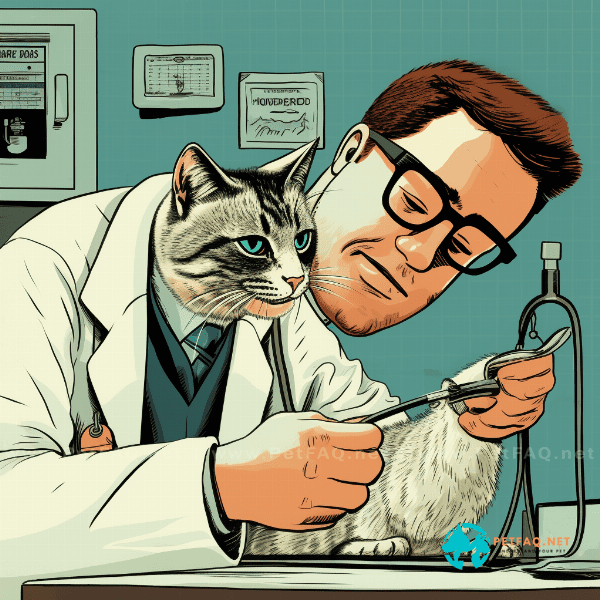
Frequently Asked Questions (FAQs) about cat gingivitis treatment:
1. Can a change in diet help prevent or treat cat gingivitis?2. How long does it take to treat cat gingivitis?
3. Can brushing my cat's teeth help prevent or treat gingivitis?
4. Are there any alternative therapies for treating cat gingivitis?



